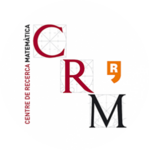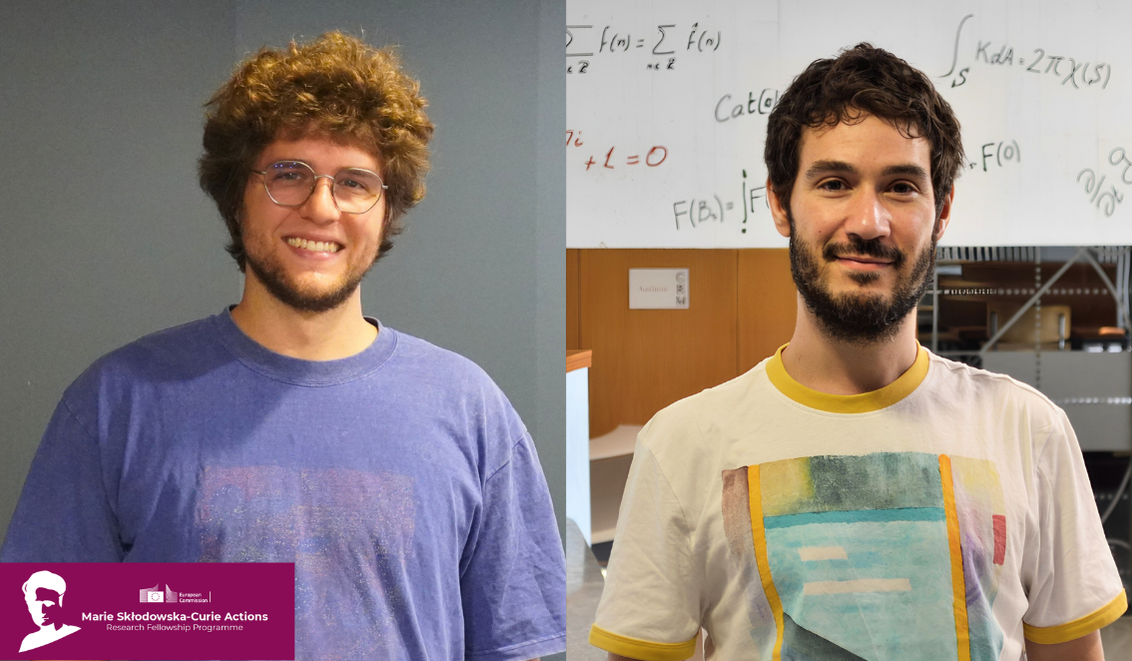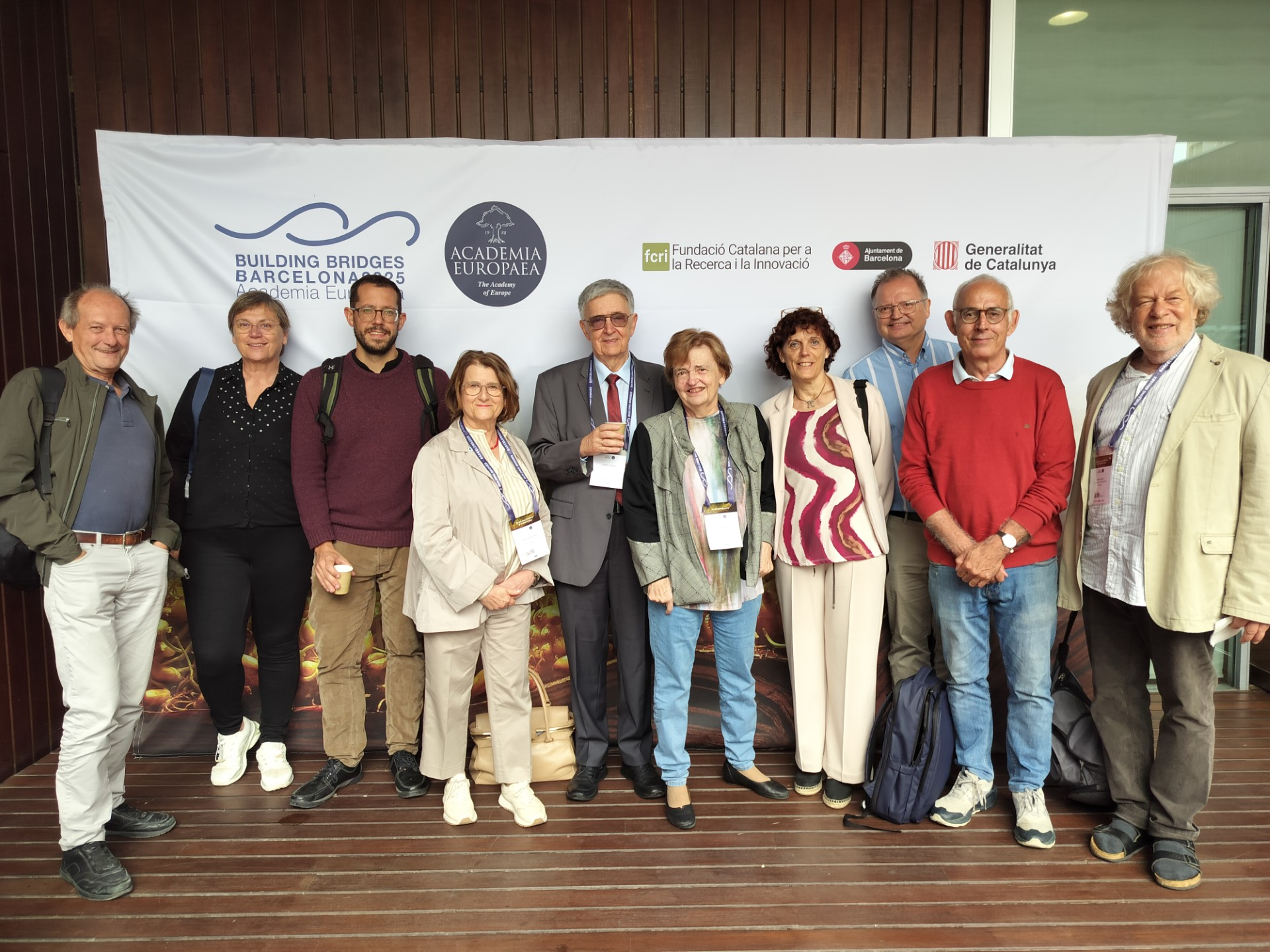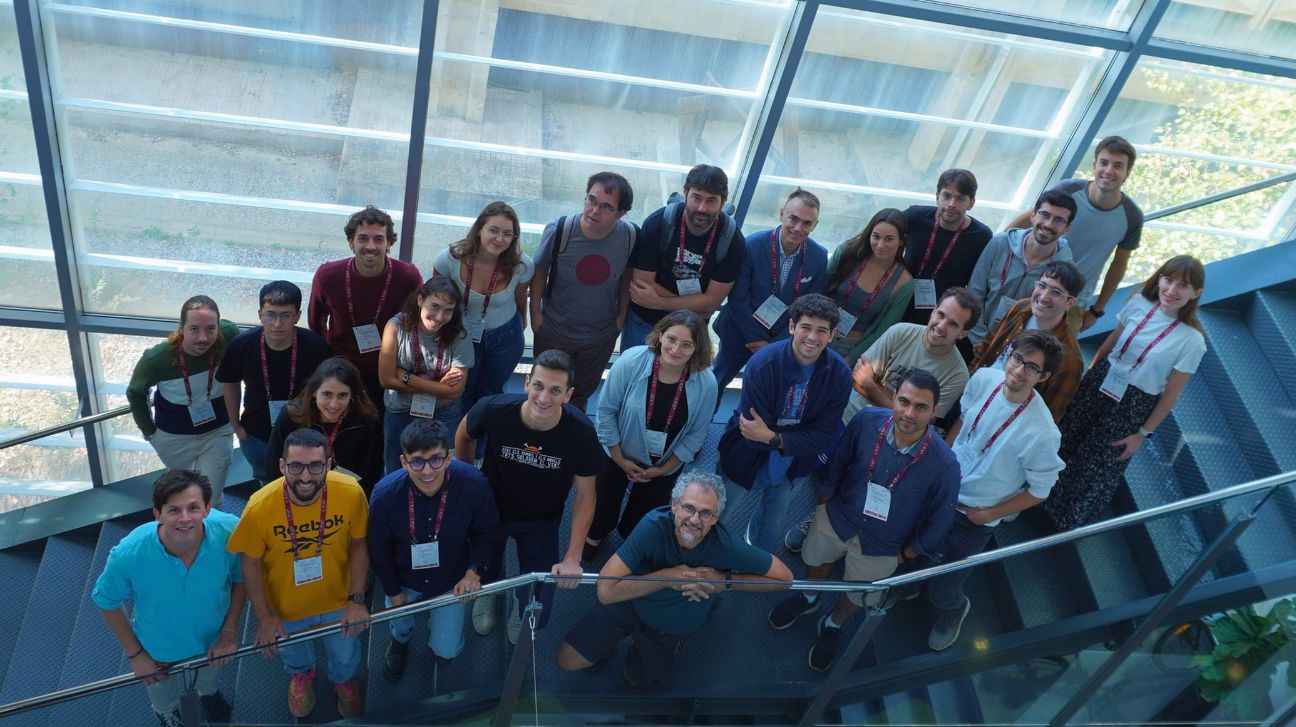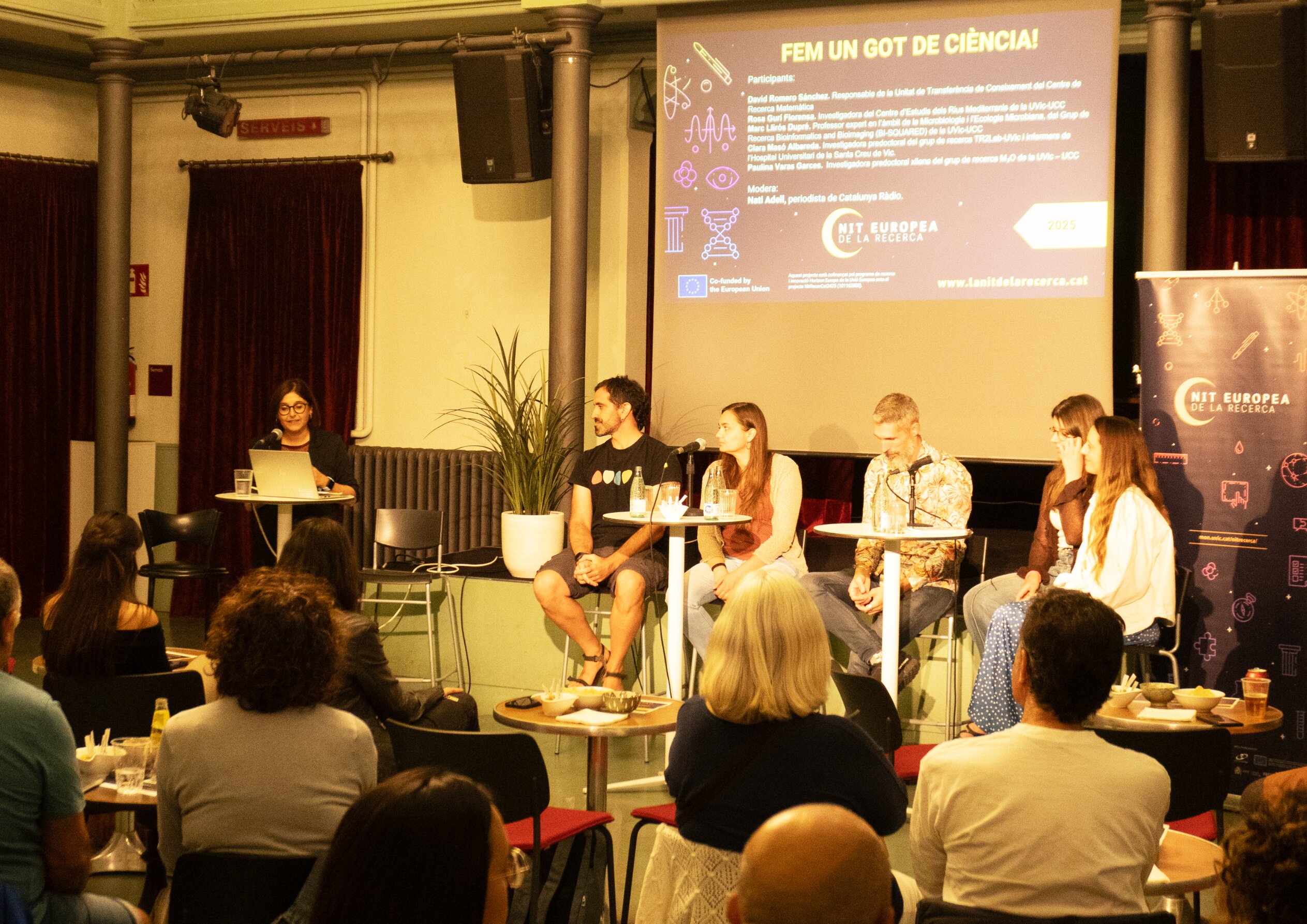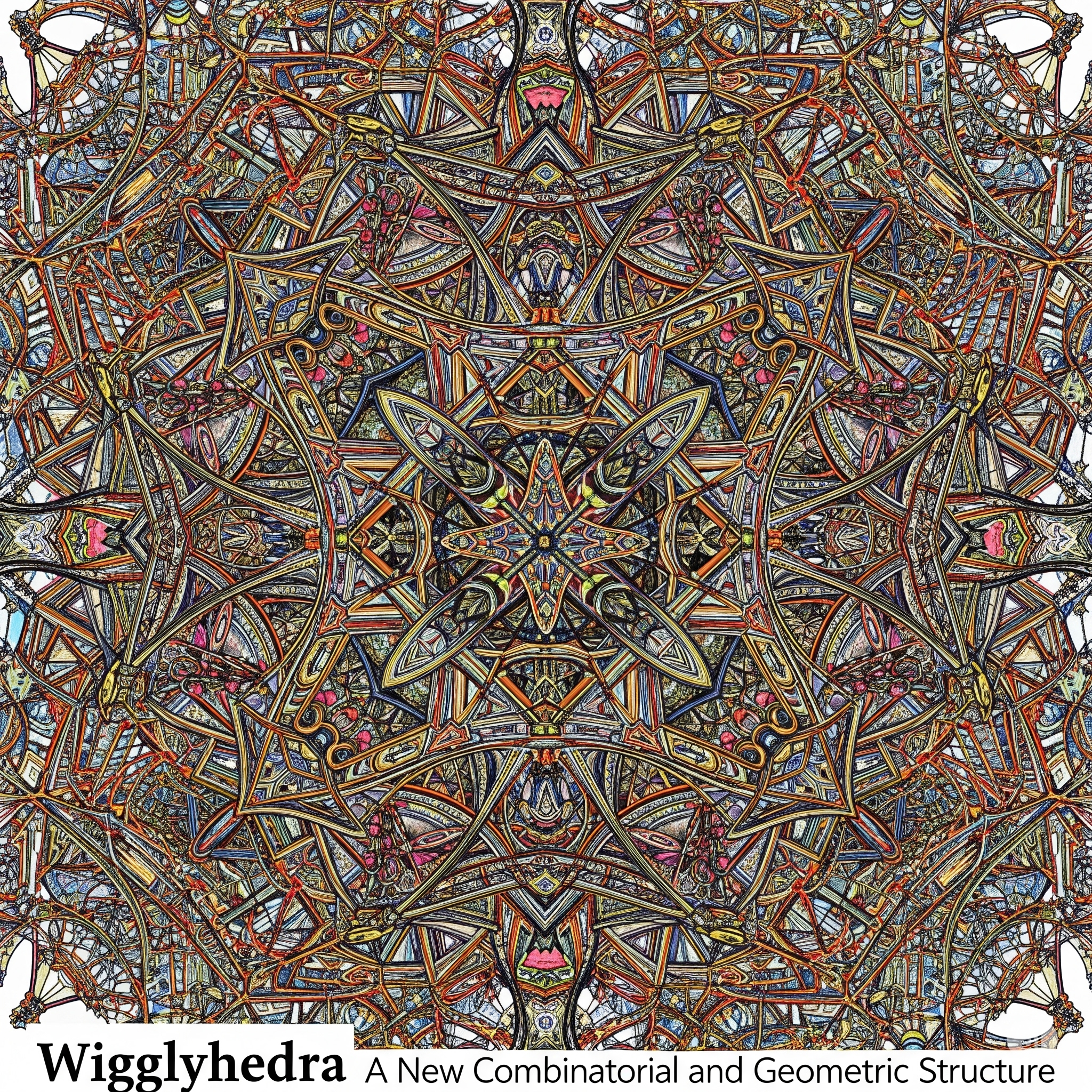On May 22 and 23, the Institut d’Estudis Catalans (IEC) opened its doors to the 12th edition of the Barcelona Computational, Cognitive and Systems Neuroscience (BARCCSYN) conference. Now a well-established event in the city’s scientific calendar, BARCCSYN continues to serve as a focal point for Barcelona’s vibrant computational neuroscience community. Researchers from mathematics, engineering, biology, medicine, and psychology came together once more to exchange insights and strengthen cross-disciplinary connections.
This year’s edition brought together more than 120 participants representing universities and research centres from across Catalonia, Spain, and further afield. Across two full days, nearly 60 posters and 10 short talks showcased a wide spectrum of topics, ranging from neural network modelling and behavioural analysis to neuroimaging techniques, virtual reality environments, and complex systems dynamics. The format, fast-paced yet dense with ideas, highlighted the breadth of methods and perspectives that characterise this growing field.

Beyond the contributed sessions, the programme featured three keynote lectures delivered by internationally recognised scientists. Megan Carey (Champalimaud Foundation) opened the conference with a talk on motor coordination and the cerebellum’s role in adapting movement in response to environmental changes. Her team’s work, based on freely moving mice and precise locomotion analysis, exemplifies the growing emphasis on behaviour-first neuroscience.
On Friday, Chris Summerfield (University of Oxford / Universitat Pompeu Fabra) explored how the human brain composes new knowledge from prior structures. His research explores the mechanisms of compositional generalisation, suggesting distinct pathways through cortex and hippocampus that support the brain’s generative flexibility.

Matteo Carandini (University College London) delivered the final keynote, proposing a unified framework for decision-making grounded in logistic classification, a method familiar in both machine learning and behavioural economics. Drawing on large-scale recordings in mice, Carandini traced how log-odds of a choice emerge incrementally across visual, auditory, and prefrontal cortices, as well as the superior colliculus.
BARCCSYN 2025 was coordinated by a team of researchers from the Centre de Recerca Matemàtica (CRM), Universitat Pompeu Fabra (UPF), Hospital del Mar Research Institute, Universitat Politècnica de Catalunya (UPC), and Universitat Autònoma de Barcelona (UAB). Institutional support was provided by the Societat Catalana de Matemàtiques, Neuroelectrics, the Societat Catalana de Biologia, and the research cooperative Symbiotik, all contributing to an initiative that continues to nurture interdisciplinary exchange.
Barcelona’s Vibrant Community
To grasp the inner workings of the brain, arguably the most intricate structure nature has produced, one needs more than observation: one needs structure, models, and abstraction. Mathematics lies at the core of this approach. Whether modelling the spiking behaviour of individual neurons or mapping collective dynamics across brain networks, mathematical tools provide the scaffolding for turning data into understanding.

Over the past decade, Barcelona has emerged as a fertile ecosystem for research that bridges neuroscience and the mathematical sciences. The local community, distributed across universities, hospitals, and research institutes, is diverse yet closely knit, coming together regularly to share work, ask questions, and develop new directions.
Despite being spread across institutions, the community meets around shared scientific initiatives that foster continuity and exchange. Regular activities such as journal clubs, thematic retreats, collaborative projects, and the annual BARCCSYN meeting serve as anchors that reinforce cohesion and help generate long-term partnerships.
An Interdisciplinary Meeting Point
This year’s edition of BARCCSYN reflected the scope and energy of this ecosystem. Contributions came from a wide range of institutions. The Centre de Recerca Matemàtica was strongly represented, with several talks and posters from members of its Computational Neuroscience group.
The poster sessions, a central feature of the programme, took place in two blocks each day. Two lively “poster blitz” sessions allowed presenters to pitch their research in under two minutes, a format that encouraged visibility and quick exchange of ideas. These sessions created space for meaningful interaction among early-career researchers and senior scientists alike. The conference closed with a short final session and the presentation of awards for the best posters and contributed talks.

With twelve editions now complete, BARCCSYN has earned its place as a cornerstone of Barcelona’s scientific landscape.
|
|
CRM CommPau Varela
|
Critical Slowing Down in Genetic Systems: The Impact of Bifurcation Proximity and Noise
An international collaboration including researchers from the Centre de Recerca Matemàtica (CRM) has shown that when several bifurcations occur close to one another, their interaction can dramatically amplify critical slowing down effect - the progressive slowdown of...
Two CRM researchers begin their Marie Skłodowska-Curie fellowships
Gustavo Ferreira and Tássio Naia, CRM postdoctoral researchers and new Marie Skłodowska-Curie fellows. Gustavo Ferreira and Tássio Naia, who joined the CRM in 2023 through the María de Maeztu programme, have started their Marie Skłodowska-Curie postdoctoral...
Matroid Week at CRM: A Collaborative Dive into Combinatorial Geometries
From October 13 to 17, 2025, the CRM hosted Matroid Week, a research school on combinatorial geometries and matroid theory. Courses by Laura Anderson and Geoff Whittle explored intersection properties and structural emergence in matroids. The event fostered deep...
László Lovász receives the 2025 Erasmus Medal in Barcelona
Mathematician László Lovász received the 2025 Erasmus Medal from the Academia Europaea yesterday at the PRBB in Barcelona, where he delivered the lecture “The Beauty of Mathematics”. Renowned for his work in graph theory and discrete mathematics, Lovász has shaped...
Combinatorial Geometry Takes Shape at the CRM
For one week in early October, the Centre de Recerca Matemàtica became a meeting ground for the world of combinatorial geometry. The Polytope Week research school gathered more than fifty participants from three continents to study the interplay...
Learning the Language of Complexity: XIII GEFENOL Summer School Highlights
From October 6–10, 2025, the Centre de Recerca Matemàtica hosted the XIII GEFENOL-DIFENSC Summer School, bringing together young researchers and leading experts to explore the role of statistical physics in understanding complex systems. The program featured courses...
A Week Inside Complexity: The First CS3 Summer School at the CRM
The first CS³ Summer School on Complex Systems transformed the Centre de Recerca Matemàtica into a crossroads of ideas, where physicists, biologists, economists, and mathematicians explored how order and chaos intertwine across nature and society....
Jezabel Curbelo receives the 2025 National Research Award for Young Researchers in Mathematics and ICT
Full professor at the Universitat Politècnica de Catalunya and researcher at the Centre de Recerca Matemàtica, Jezabel Curbelo has been honored with the 2025 National Research Award for Young Researchers in the María Andresa Casamayor category (Mathematics and ICT)....
Tim Myers represents ECMI at the ICIAM Board Meeting and promotes industrial mathematics in Vietnam
ICIAM Board and VIASM Members during a breakVietnam hosted the ICIAM Board Meeting and Workshop this September at the Vietnam Institute for Advanced Study in Mathematics (VIASM), gathering 70 delegates from five continents. CRM researcher Tim Myers attended as the...
Why Your Brain Is Never Still: Representational Drift and Statistical Learning
A paper recently published in Current Opinion in Neurobiology by Jens-Bastian Eppler, Matthias Kaschube, and Simon Rumpel shows that...
El CRM porta les matemàtiques a la Nit Europea de la Recerca: de l’asfalt als fractals i al futbol
La Nit Europea de la Recerca va portar a Barcelona, l’Hospitalet i Vic tres investigadors del CRM que van mostrar la diversitat i la vitalitat de la recerca matemàtica. A la Casa Golferichs, Leticia Pardo (UB-CRM) va introduir el públic en el món dels fractals,...
Wigglyhedra: A New Combinatorial and Geometric Structure
In the article "Wigglyhedra", researchers Asilata Bapat (Australian National University) and Vincent Pilaud (Universitat de Barcelona – Centre de Recerca Matemàtica) introduce the wiggly complex, a novel combinatorial and geometric structure, along with its associated...
















